You Can(t) See Me Now! (2020) Web Performance
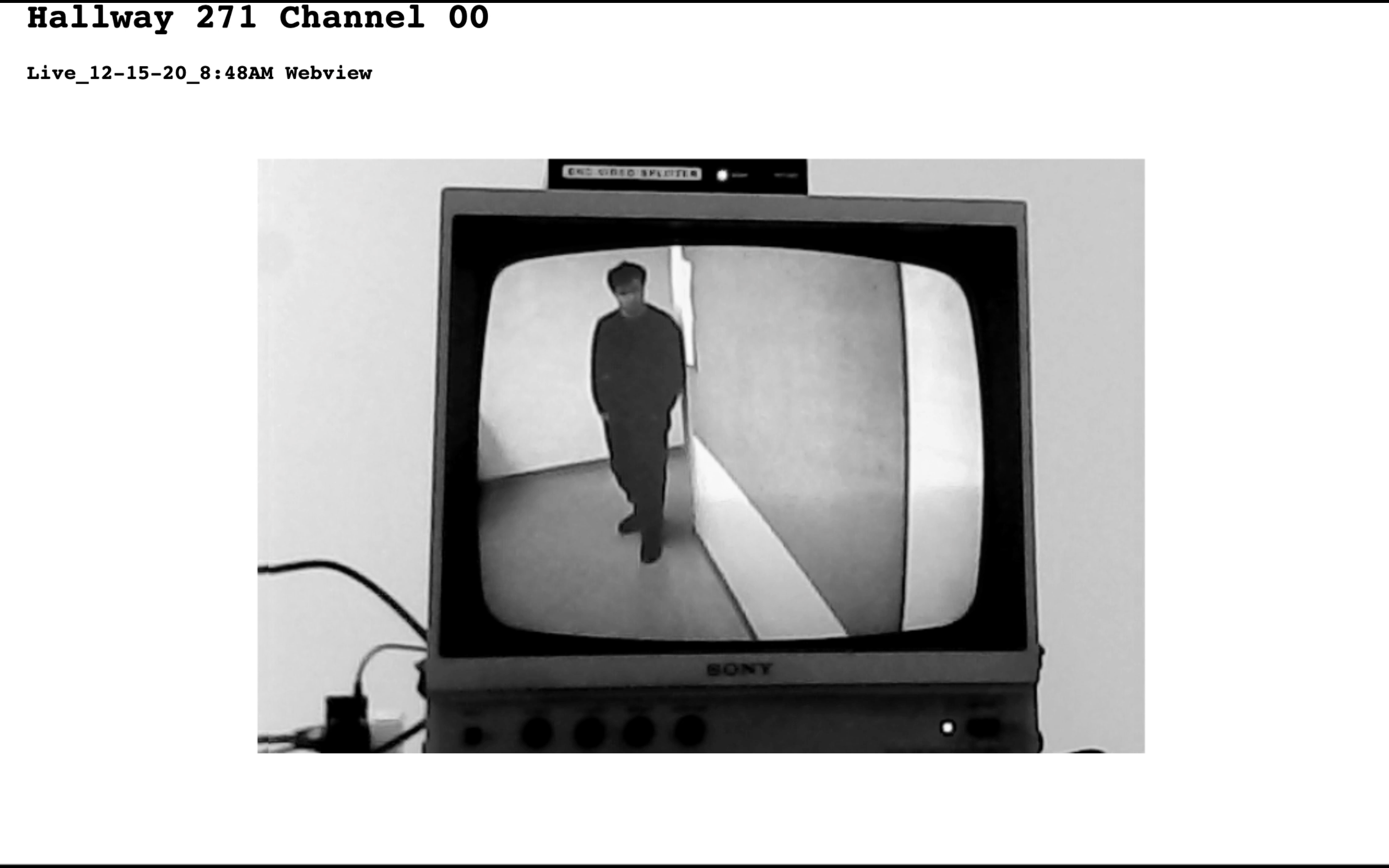
Materials: MacOS, p5.js, local HTML, ZOOM, SONY HandyCam, WebCam, Tripod, Arduino, Piezo Speaker, UltraSonic Sensor, CRT Monitor, Distribution Amp, RCA Cable
During the fall and winter of 2020 I started working with web video in the javascript library p5.js to digitally redraw video pixels. I also using Arduino Nano IoT 33 to make events occur with serial sensor data. Both of these processes were learned during DMS 550 Physical Computing taught by Mark Shepard.
This piece was imagined as a kind of sinister film. Someone is sitting in a room with their back to the door, monitoring an entry hallway by looking at a CCTV. A person appears in the surveillance image and moves down the hall. The closer they get to the room where the observer is located the more the surveilance monitor is scrambled. This disruption does not allow for the remote obsever to clearly see the intruder. The viewer so glued to the distroted image of the screen that they will not turn in time to meet this stranger who is moving toward them...
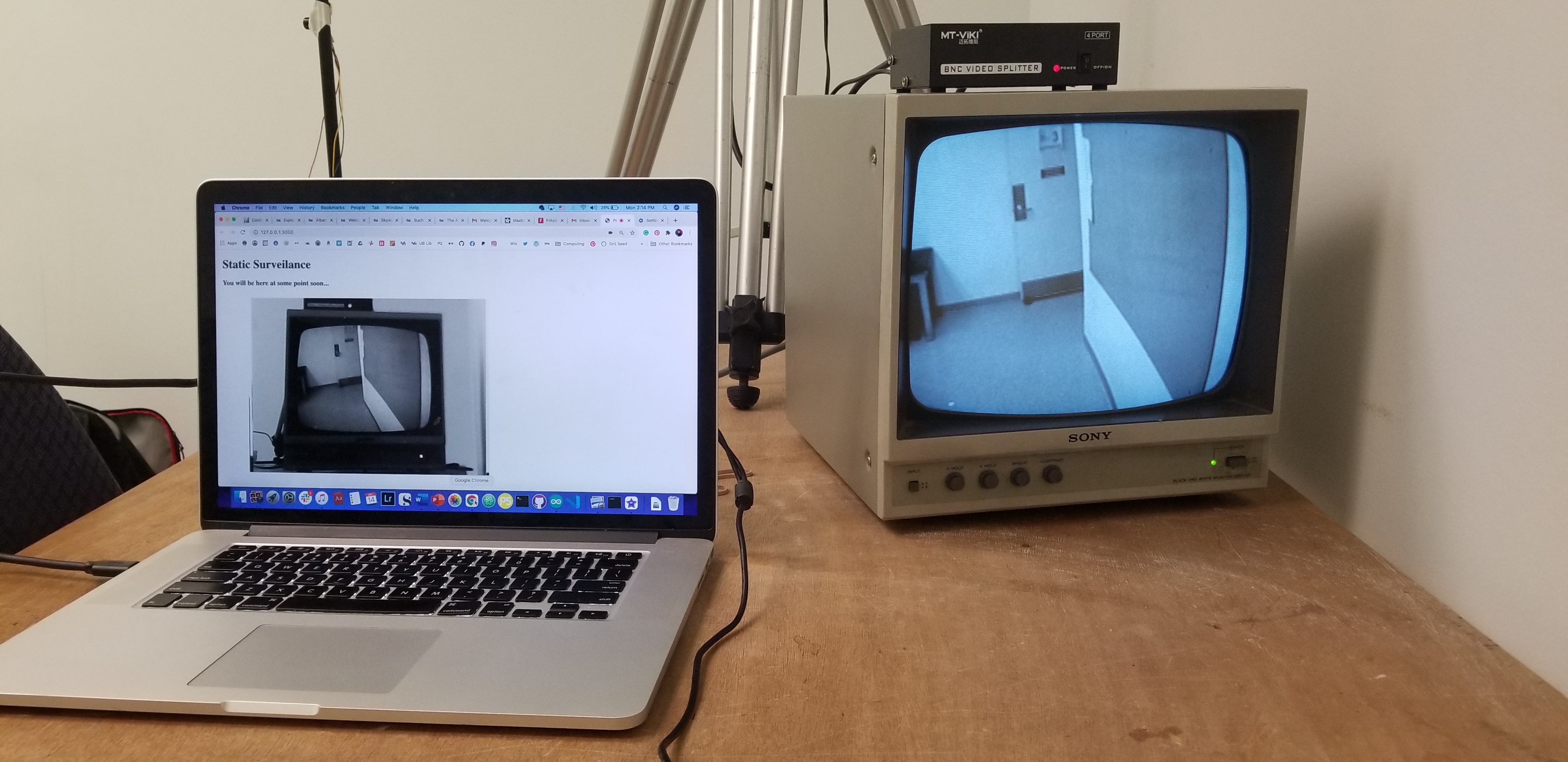
Two Video Feeds: Digital & Analog Video Inputs and Outputs
Due to the restrictions of the COVID-19 pandemic I chose instead to make the viewer in the room the audience by doing a real-time web performance broadcasted over Zoom. As the sole performer, coder, and installer I successfully interfaced the closed-circuitry of analog video and with the circuit of online digital video. The shared surveilance whose source image is interupted by an unseen psycho-signal from a character who see’s and dislikes the surveilance camera in the hall. The visual results of the performance were screen grabbed as a video file.
You Can(t) See Me! reads as a rebellion against mass surveilance by glitching the unfixed nature of video imagery. Beneath the narrative are technoliges that sample and inform by way of analog means. The video space of the Cathode Ray Tube (CRT) is space that appears in another space. The CRT itself is being surveiled by a webcam which is picking up the interfaces image output and subject.
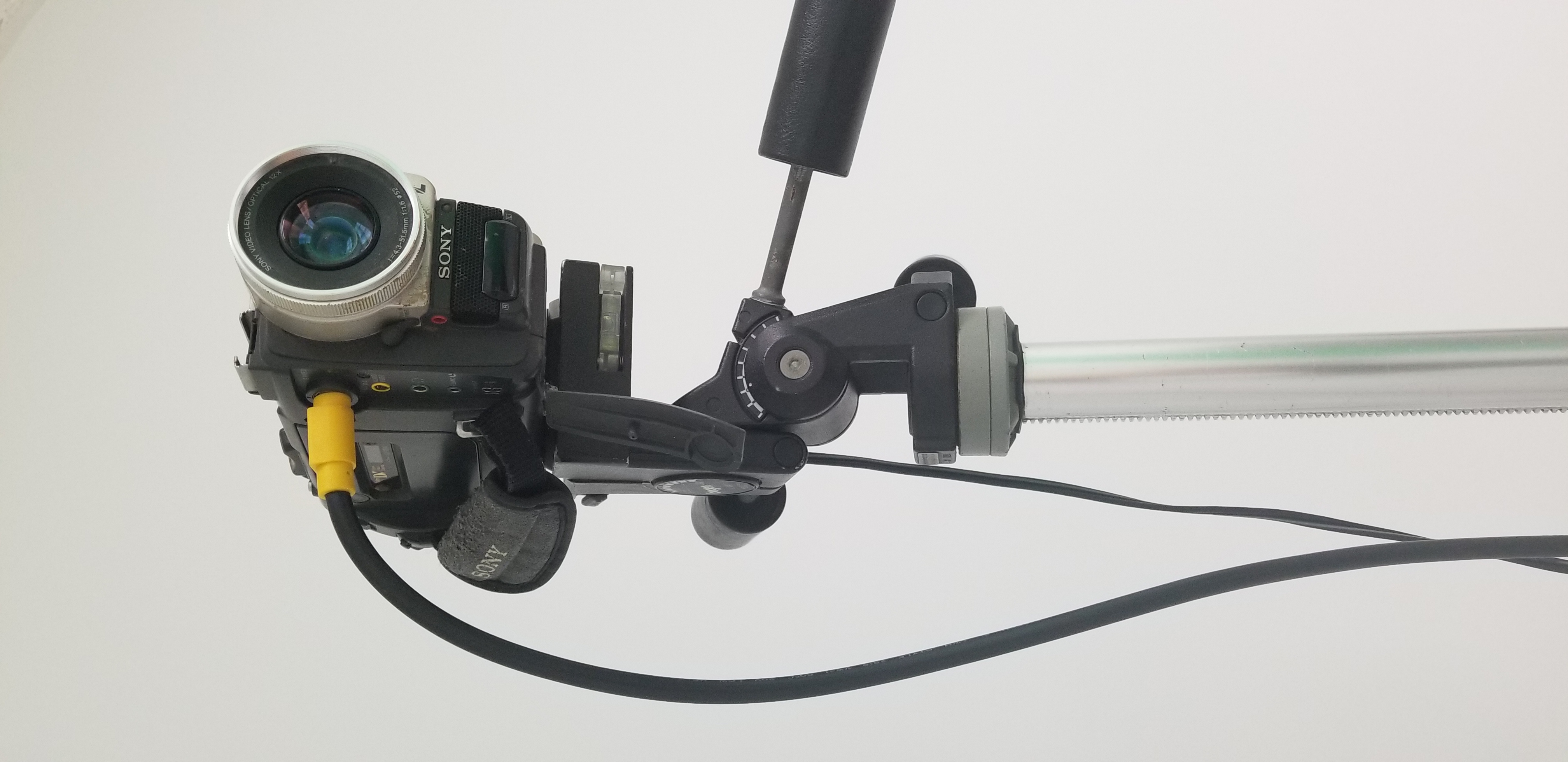
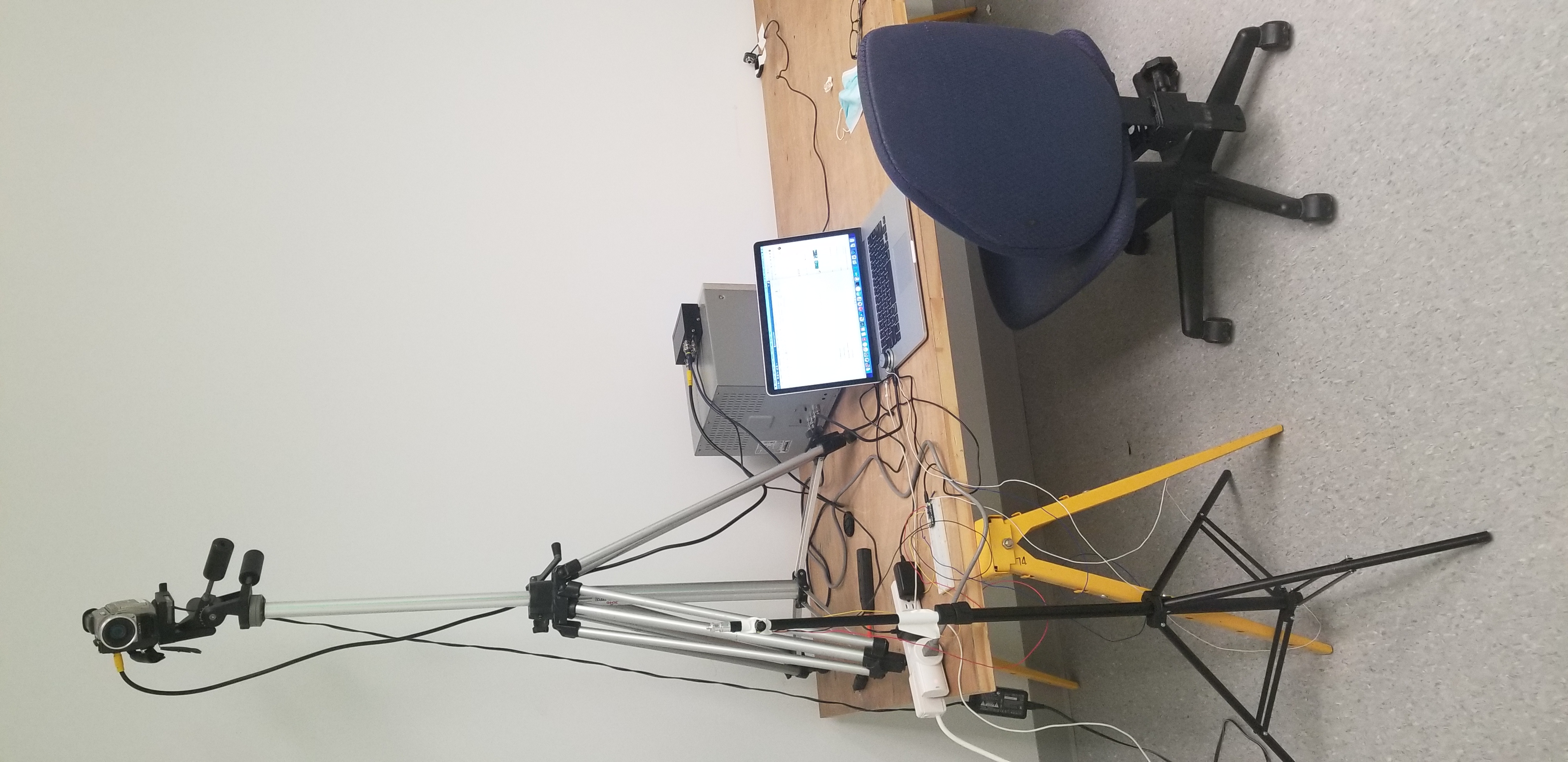
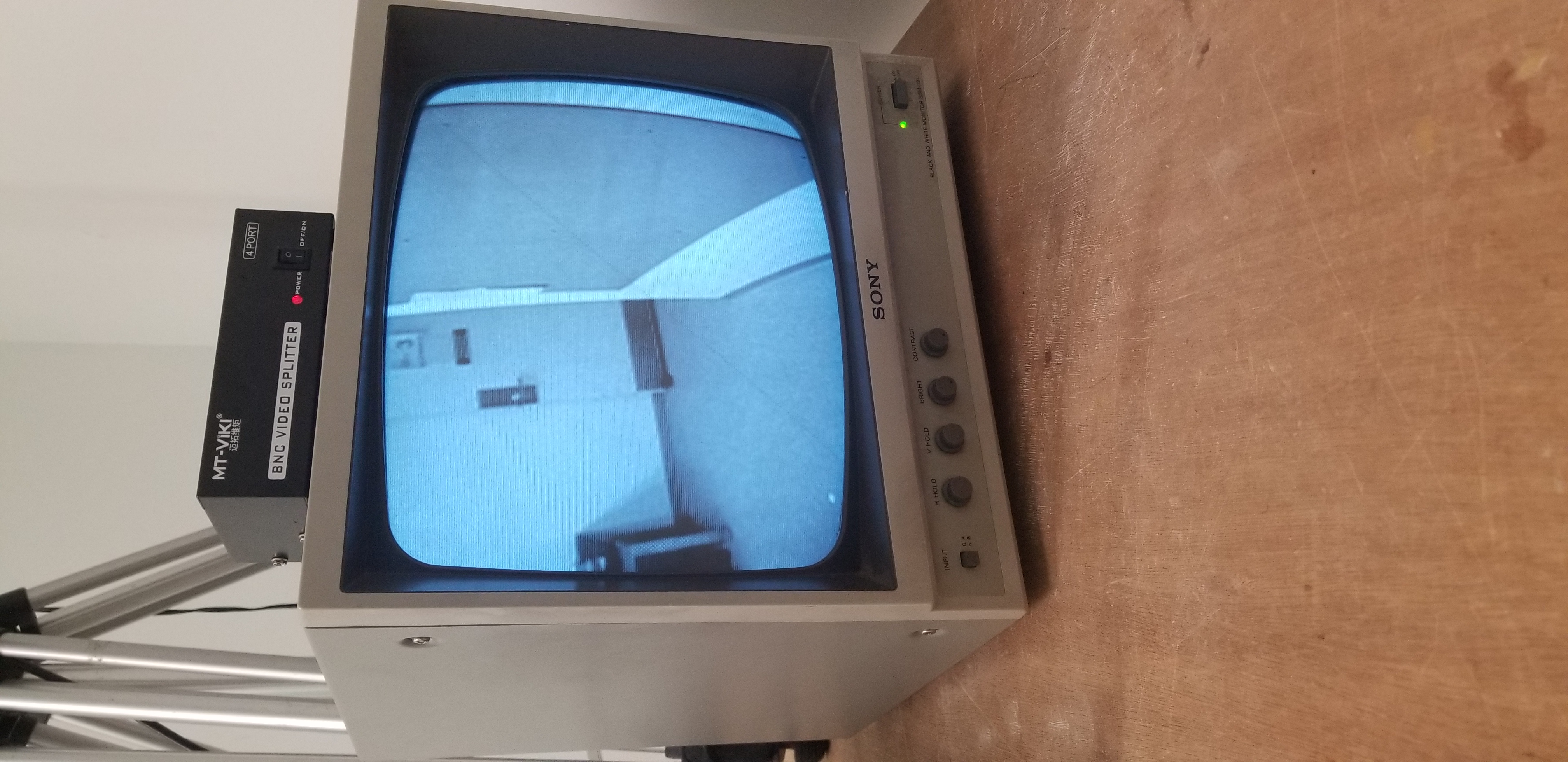

The MatBotix sensor emits a beam whose frequencies are sent as serial data to the Arduino. When an on coming object alters the frequncy the changing numerical data stream generates a sin wave. The sound of the sin is emitted from a small speaker which is placed analogically on a computer microphone. When the frequency increases so the audio pitch. This picked that was up by an internal computer microphone activates code that jitters the drawing of a video feed pixels in p5 script and dispaled on HTML webpage.

Matbox Ultra Sonic Sensor on stand

Aduino IoT 33 On Breadboard Wired
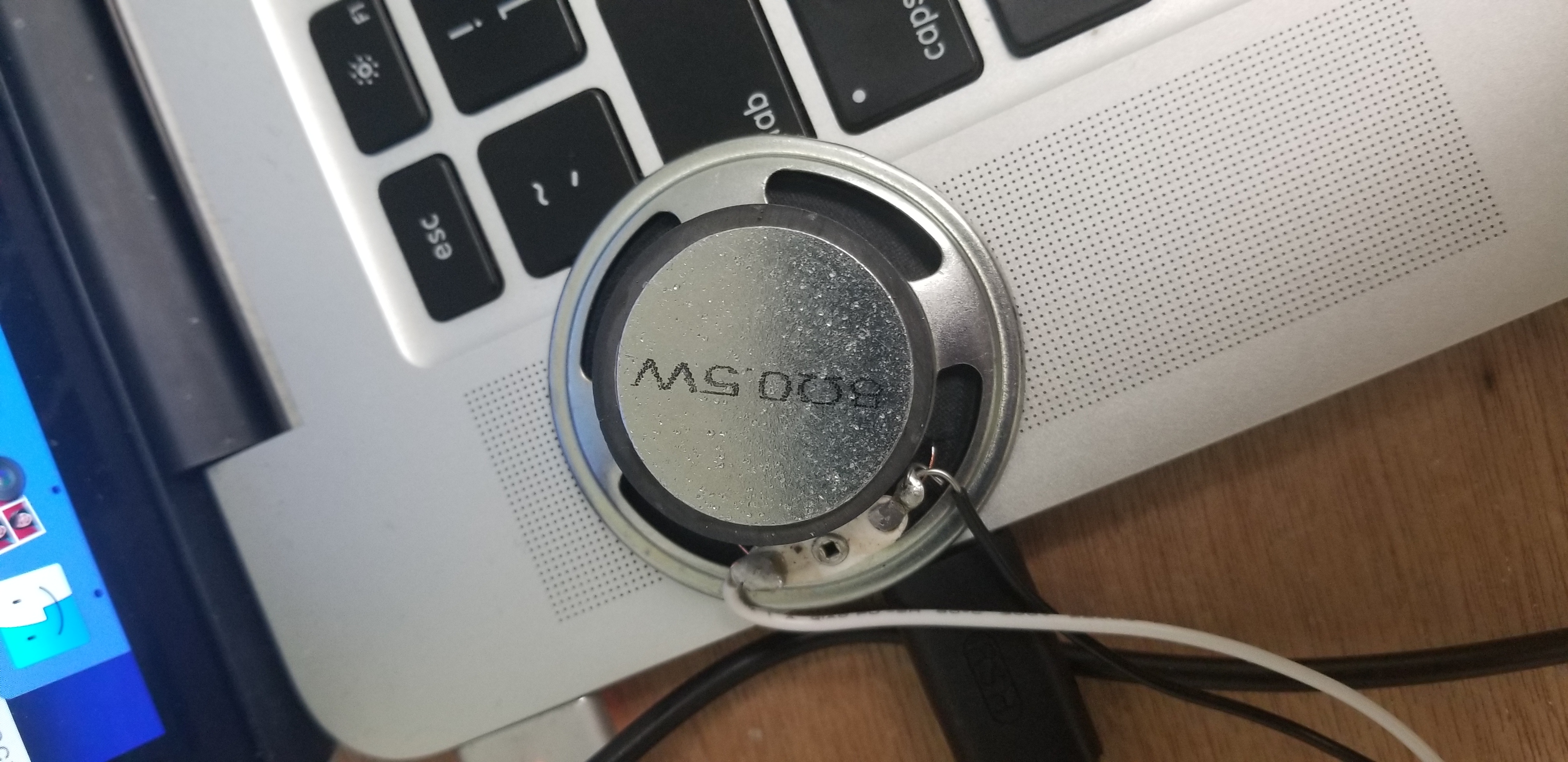
Piezo Speaker Feeding Into Computer Microphone
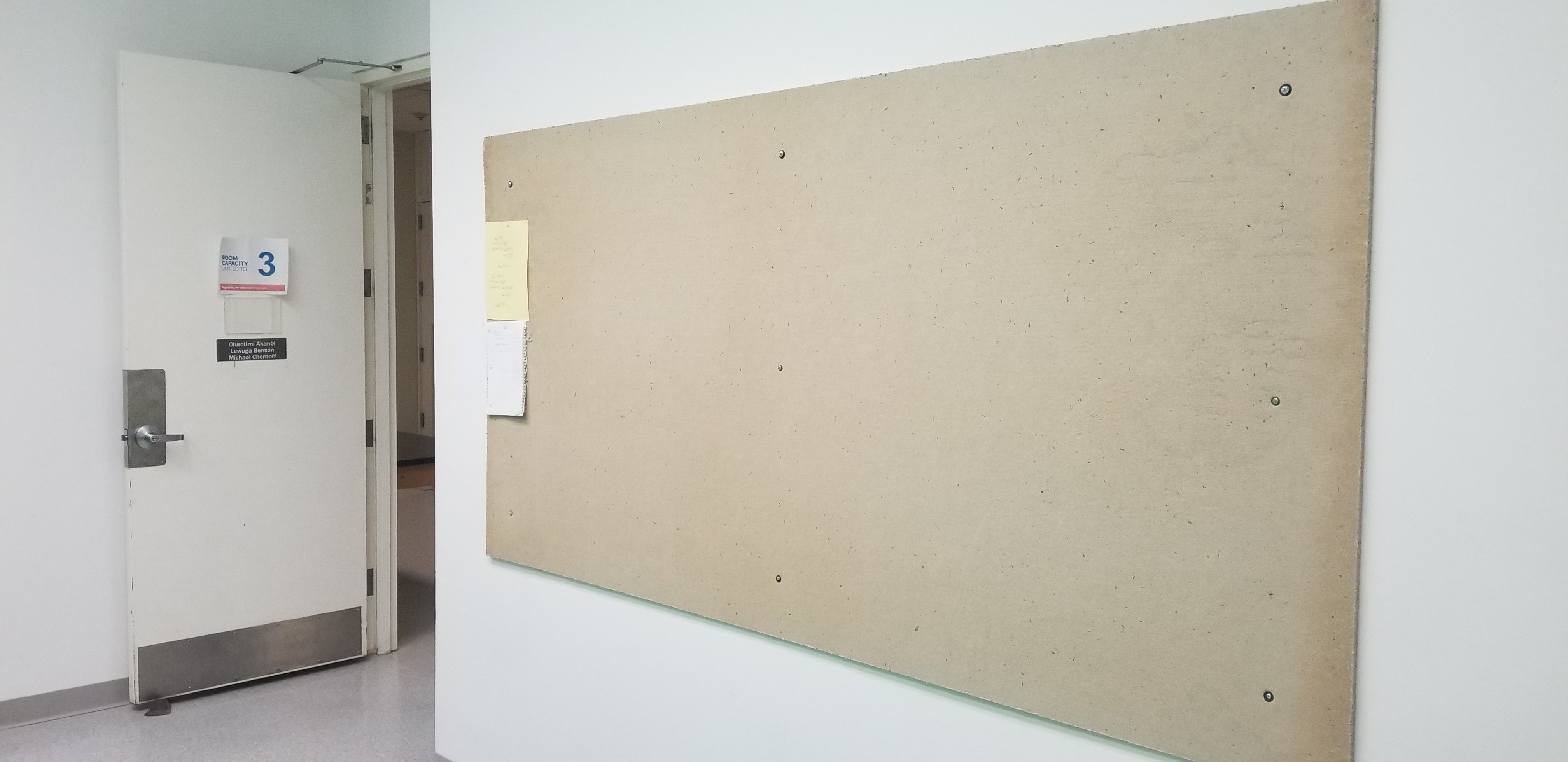
Hallway Scene - CFA 271 - Graduate Art Studio
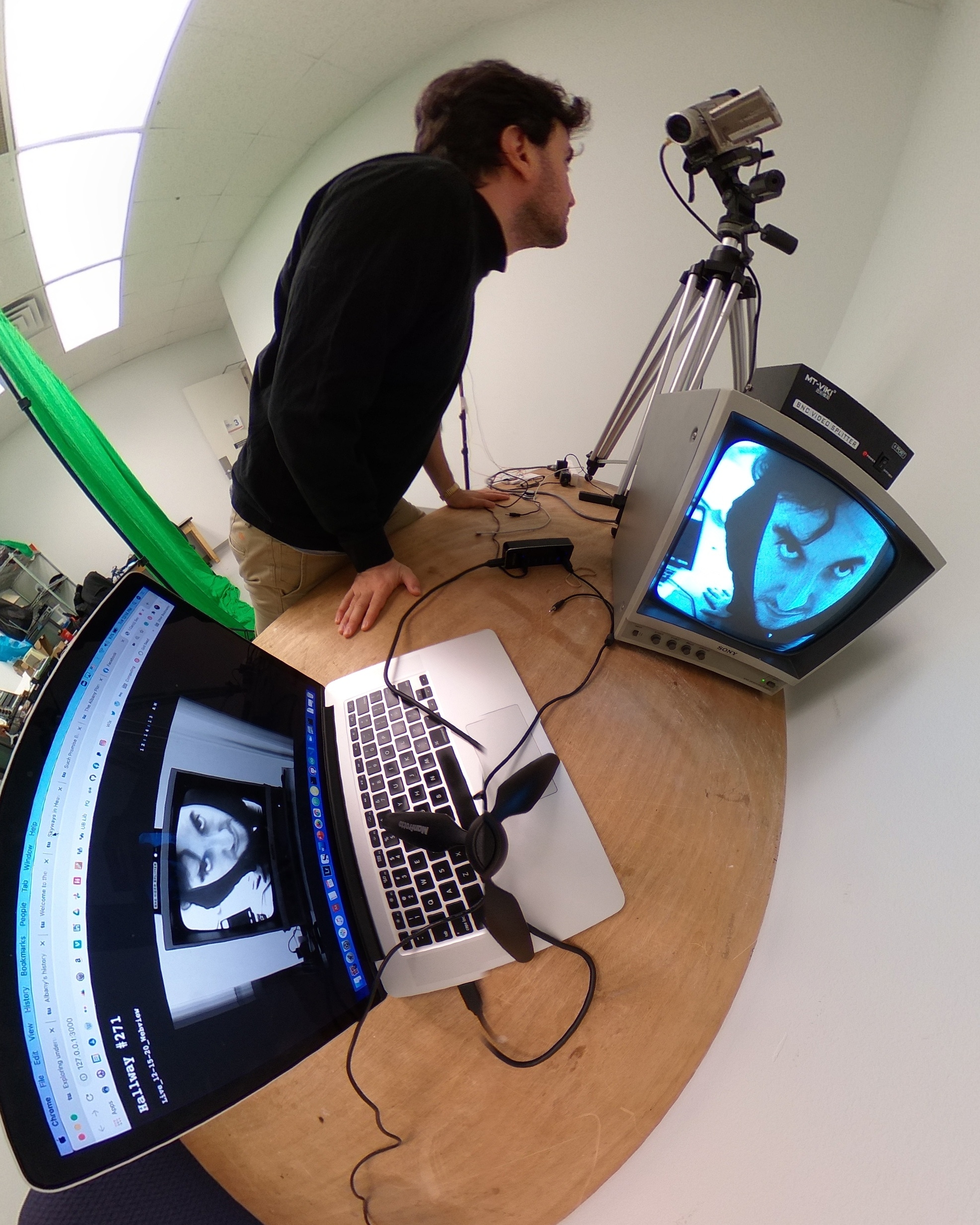
360º Photo of Artist in the Installation
Due to the projects minimalist and intermedial nature what we get is blending of video art and programming. The monochrome space of a white washed hall and archaic TV harken to 1970’s artwork by the likes of Bruce Nauman. The space of the openness of the room is skewed into a hallway due to the framing of the camcorder, television, webcam, and online graphical representation. The differential closed and open circuitry of video is one analog and the other digital. That the analog equates to state surveilance while the webcam is popularly used to surveil the self, both transmitting data to other parties. Machines communicating through one another blurs if the subject is the imaged person who acknowledges the distant other directly or if its the machines themselves that are the subjects. The reality is that outside of television video has always served as total field of surveilance and that the increasing windows of video cameras on computing devices is nothing new. Just like the traditional CCTV apparatus people by and large accept surveilance as given of modern living.
But if we recognize the long standing usage of video surveilance how can we interupt its hold on us? I believe the first step is for everyone to acknowledge these facts and not be passive objects but involved subjects in video signal which is always on and never off. That when circuits overlap communication about us occurs without intention.
2020 Progressive Documentation on Arena DMS 550 Prof Mark Shepard
About Me ︎ Curriculum Vitae
Project Index︎︎︎
2023
Videosphere: You’re Always On A Screen Somewhere...
Brown Bunny
Inertia
2022
MAX Jitter Programming
FxR Versus AhR
Async Rolling
Always On
Enframing Rey
The Vidiot
Computer Home Entertainment
2021
Machine Learning: ATM
Pursuing Earth
THE LIBERTARIAN
Wiley World Wide Weather
ReWind Compressor
Discarding Earth
Being A Passenger
2020
Can(t) See Me Now!
ColorPress Brush
White Ball Flux Brush
THE APP
2019
PATS
2018
Ice Cream Drone
2015
Vanilla ISIS
2017
Invisible Foci
2014
Digital Synthesis Illustration
2013
Rood World
Synthesis Ilustration
2011
Verse
Master (Series)
Video Being
2010
Dance Aches
Bangalor
︎ macherno@buffalo.edu
︎ videoarchaeology
︎ michaelchenoff
︎ michaelchernoff
︎ videosignified
︎ michaelchernoff
︎ Videosphere
©2010-2023 Michael Chernoff